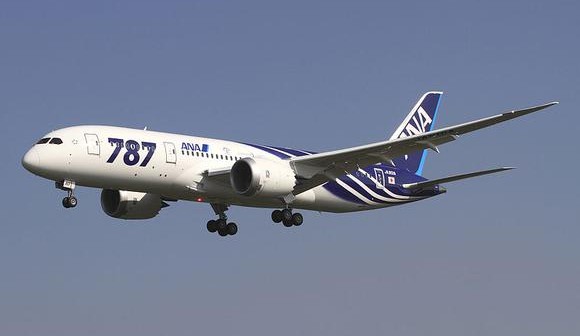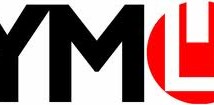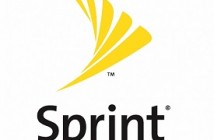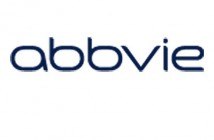Boeing (NYSE:BA) introduced its 787 Dreamliner in the November of 2011. It has been over 490,000 hours since the 787 Dreamliner came into service. It has 21 operators. Boeing (NYSE:BA) proudly describes the 787 Dreamliner as the first aircraft half of whose structure is made up of composite metal. The jet is highly efficient and very light. With a wide body, this mid-sized, long-range jet consumes lesser fuel than other comparably similar jets. 787 Dreamliner has three models, whose capacity varies from 242 to 323 passengers. Boeing (NYSE:BA) claims that the jet costs 10% lesser for the passengers per mile as well. In October 2011, the jet attracted its highest seat bid worth $34,000.
The Dreamliner 787, undoubtedly, has amazing attributes. However, investors are worried about the declining cost of this program. The deferred cost was estimated $25 billion previously. However, just recently, the jet crossed that mark. They wonder when the jet will start churning profits.
Boeing 787 faces several challenges. In 2003, Boeing (NYSE:BA) decided to build an aircraft with a carbon-composite structure. In 2004, they revealed their plans for the Dreamliner. All Nippon Airways was the launch customer of Dreamliner 787. Jet orders were placed for 50 units that would be delivered by 2008. But, Boeing (NYSE:BA) faced production and supply chain challenges, due to which, the launch was delayed until 2011.
Many technical obstacles were faced after the launch of the jet. As As a result, the costs shot upwards. Dreamline 787 posed problems that included engine failures, wiring issues in the vicinity of the main battery, fuel leakages and fire on an empty jet in Boston. Boeing (NYSE:BA) had to spend a fortune to take care of these safety issues. Late in the September 2014, a Dreamliner 787 had to make an emergency landing at Glasgow because a fire alarm had gone off. Incidents such as these mean that the deferred cost of 787 has gone through the roof.
Boeing (NYSE:BA) described the deferred production cost as the difference between the money invested in making the jet and the selling price of the jet. This does not include the development cost. In October, last year, Boeing (NYSE:BA) increased its deferred production cost for 787 Dreamliner to $25 billion from $20 billion. This was on account of the increased amount of spending on launching the jets and plans related to increasing the jet capacity in 2014 and 2015. Unfortunately, in the previous quarter, Boeing (NYSE:BA) reported that the deferred cost of 787 Dreamliner has increased again – by $947 million to $25.5 billion.
Analysts estimated the cost price of Dreamliner 787 from $160 million to $232 million. This is well below the list price range of $218.3 million – $297.5 million. Boeing (NYSE:BA) claimed that they have sold the jet at lower costs. This means that the deferred cost has increased. Now the question is that when will the company stop spending and start gaining. The company expects to break even in the next year. Let’s see if the company can manage to get some cash out of the Dreamliner.





Pingback: 1ingress
Pingback: bonanza178
Pingback: buy magic mushroom microdose capsules online Australia
Pingback: 토렌트
Pingback: botulinum toxin type a price
Pingback: sci-sciss
Pingback: อัตราจ่ายของ หวยจีนบน LSM99live
Pingback: go x honolulu
Pingback: trippy bombs chocolate bar for sale
Pingback: one up mushroom bar instagram
Pingback: grote blote tieten
Pingback: more tips here
Pingback: เว็บมวยไทยออนไลน์ Lsm99live
Pingback: Taxi To Koh Chang
Pingback: ปั่นสล็อตฟรี
Pingback: อุปกรณ์ อุตสาหกรรม
Pingback: fenix168
Pingback: ทางเข้าpg
Pingback: ทางเข้าpg168
Pingback: som777
Pingback: เว็บเจ้ามือ แทงหวยใต้ดิน
Pingback: kc9
Pingback: ออกแบบตกแต่งภายในคอนโด
Pingback: Douceur Beauty
Pingback: BMW detailen
Pingback: https://www.hitxgh.com/navigating-online-markets-a-beginners-guide-to-e-commerce-and-passive-income/
Pingback: manutenção informática lisboa
Pingback: big bass splash
Pingback: Winspark
Pingback: บ้านพักคนชรา
Pingback: เครื่องเป่าแอลกอฮอล์
Pingback: ฟันเหลืองเกิดจากอะไร
Pingback: บ้านบางนา
Pingback: Spielen Sie im Vox Online Casino
Pingback: เว็บบาคาร่าที่น่าเชื่อถือ
Pingback: พัดลมอุตสาหกรรม
Pingback: รับดูแลผู้ป่วย
Pingback: Ufa9789 แทงบอลออนไลน์เว็บตรง
Pingback: โคมไฟ
Pingback: clothing manufacturer
Pingback: dental clinic krabi